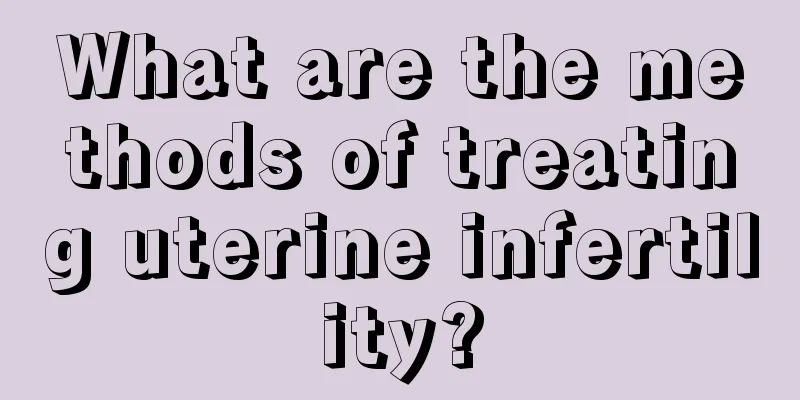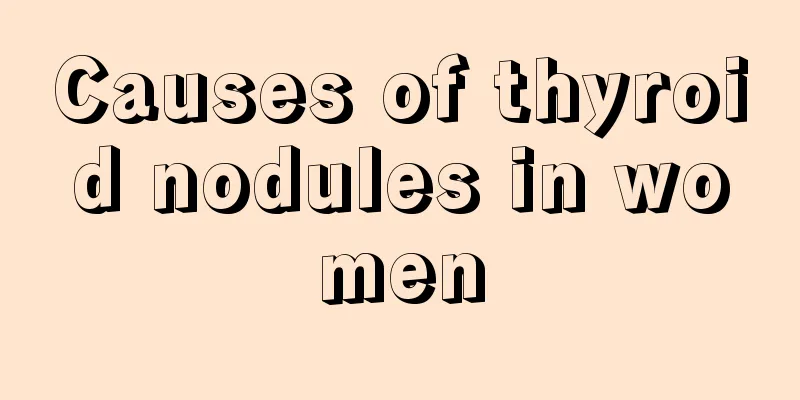What are the methods of treating uterine infertility?

|
Everyone longs to have a child of their own. We also see many people suffering from infertility on TV. Infertility mainly targets women and infertility targets men. Maybe in the movie they adopt a child, but in real life, we want to have a child of our own through treatment. The following introduces the methods of treating uterine infertility. 1. Cervical atresia, stenosis and dysplasia of the cervix. The main treatment for uterine infertility is uterine dilation: it is performed after the menstruation is over or before ovulation. First, a sterilized probe is used to probe the uterine cavity, and then the cervical dilator is used to dilate from No. 3 to No. 7. Congenital cervical dysplasia can be treated simultaneously with artificial cycles or high-dose progesterone as pseudo-pregnancy therapy. 2. Abnormal cervical mucus. The cervical mucus secretion is too little and thick. Small doses of estrogen can be used to treat uterine infertility, which can improve follicle function, thin the cervical mucus, and facilitate the passage of sperm. There are also reports that the use of pulsed or intravenous luteinizing hormone-releasing hormone (LHRH) can also improve cervical mucus and achieve conception. 3. If sperm and cervical mucus are incompatible, cervical mucus exchange can be performed. That is, during the ovulation period, after disinfecting the vagina and cervix, the patient's cervical mucus is sucked out and the cervical mucus of a donor with good compatibility in the penetration cross test is injected into the patient's endocervical canal. It would be more ideal if the cervical mucus of a donor containing the husband's semen in the slide penetration cross test is injected. 4. Cervical fibroids: Surgery is the main measure to treat uterine infertility. Small fibroids can be treated with vaginal myomectomy or enucleation. Larger fibroids require abdominal resection. For infertile patients, the principle of surgery is to maintain the function of the cervix as much as possible and prevent adhesion or stenosis of the cervical canal. Cryotherapy can also be used. The cryotherapy head is in the shape of a pencil or needle and is inserted into the fibroid or at the base. Each freezing session is for 2-3 minutes, once a week, and not during menstruation. After 5-10 treatments, the fibroids will shrink or fall off from the base. There are many causes of uterine infertility, mainly endometritis, intrauterine adhesions, uterine hypoplasia, and infertility caused by uterine malformations. Women with these diseases must go to a regular hospital for examination and treatment in time, and choose a treatment method for uterine infertility that suits them under the guidance of a doctor, and be careful to avoid serious adverse consequences caused by improper treatment. In fact, there are still a few people suffering from infertility. Although one part of the reason is congenital and the other part is acquired, as long as we find the real cause, we can definitely treat this disease. I believe that female friends will definitely pay attention to this disease and hope that everyone can have a child of their own. |
<<: How effective is microwave therapy for adnexitis?
>>: What are the treatments for uterine infertility?
Recommend
Breast pain after one week of delayed menstruation
Chest pain is a very common problem for women. Wh...
Reasons why women's hair grows slowly
Hair growth is mainly controlled by hormones. Mod...
Will eating hairy crabs make you feel cold? What can you eat with hairy crabs to avoid feeling cold?
Hairy crabs are a very popular variety of crabs. ...
How to remove sunken scars? An old Chinese doctor teaches you how to remove scars
In our lives, some accidents in life often leave ...
I'm pregnant and my butt hurts, is it a boy or a girl?
During pregnancy, many people will guess whether ...
What to eat if you have dampness and cold uterus
There are more and more people suffering from int...
Why are there white marks after laser freckle removal?
Freckle removal is a very important beauty item i...
Why are there so many "asymptomatic infections"? What's the difference between asymptomatic infections and positive tests?
As the weather gets colder, the COVID-19 outbreak...
Correctly understand diabetes prevention and treatment. Listen to what experts say
Xinhuanet, Beijing, November 14th. Today is the a...
When summer comes and you have a stuffy nose and sneezing, how do you tell whether it is a cold or a pollen allergy?
In spring, flowers are in full bloom, and pollen ...
What tests do pregnant women need to take when they are seven months pregnant?
For pregnant women, one thing that each of us can...
What to do if lumps appear during weaning
Weaning is a very painful process, during which w...
Absence of menstruation and odor
Problems during menstruation are prone to occur, ...
Is adnexitis pelvic inflammatory disease?
Today, people tend to ignore their physical healt...
Is it okay to have sex before my period is over?
Menstruation takes three to seven days to come, a...









